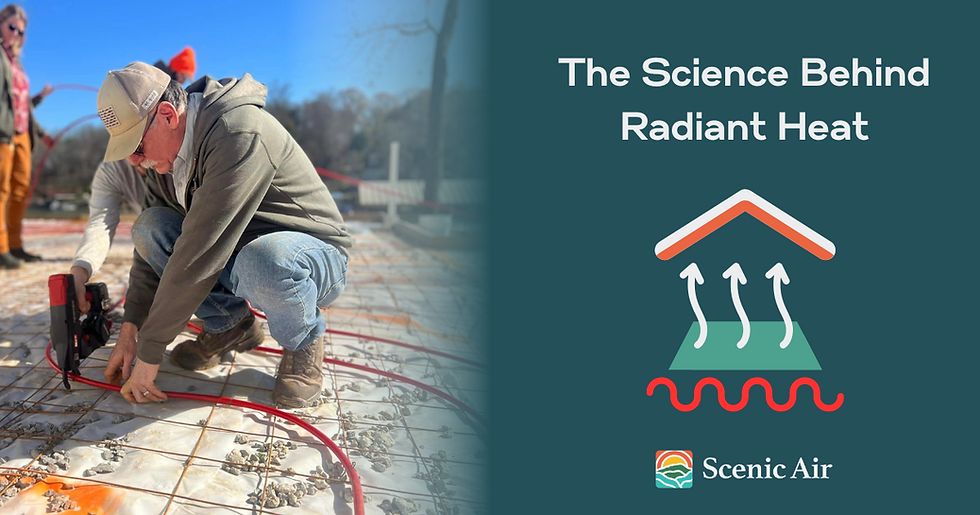The Science Behind Radiant Heat: It's Not Just Warmth
- Drew Porter
- Jan 3
- 2 min read

You've felt the warmth of the sun on your face. That's radiant heat. But how does it work inside your home, and why does it feel so different from forced air?
It's not just about the temperature; it's about how the heat is delivered. Think of it like this: a campfire radiates heat directly to you, warming your skin without heating the air around it significantly. Radiant heating works similarly.
Instead of heating the air and then waiting for that air to warm the objects in the room, radiant systems warm objects directly. Imagine infrared rays gently warming your floor, walls, and even furniture. These surfaces then radiate heat back into the room, creating a more even and consistent temperature.
Unlike forced air systems that can create hot and cold spots, radiant heat provides a more comfortable and natural feeling warmth. You feel the warmth coming from all around you, not just from vents blowing hot air.
This gentle, even heating is due to infrared radiation. It's the same type of energy that comes from the sun. Radiant systems use this energy to gently warm surfaces, which then radiate heat back into the room.
Here's how hydronic radiant systems work:
A network of pipes: Imagine a network of small pipes, often made of a flexible material called PEX, embedded within your floor, walls, or even ceilings.
Hot water circulation: These pipes are connected to a boiler or a high-efficiency heat source. Hot water circulates through these pipes, gently warming the surrounding surfaces.
Even heat distribution: As the floor, walls, and ceilings warm up, they begin to radiate heat back into the room, creating a comfortable and even temperature throughout.
Understanding the science behind radiant heat helps you appreciate its unique benefits and make informed decisions about your home's comfort.




Comentarios